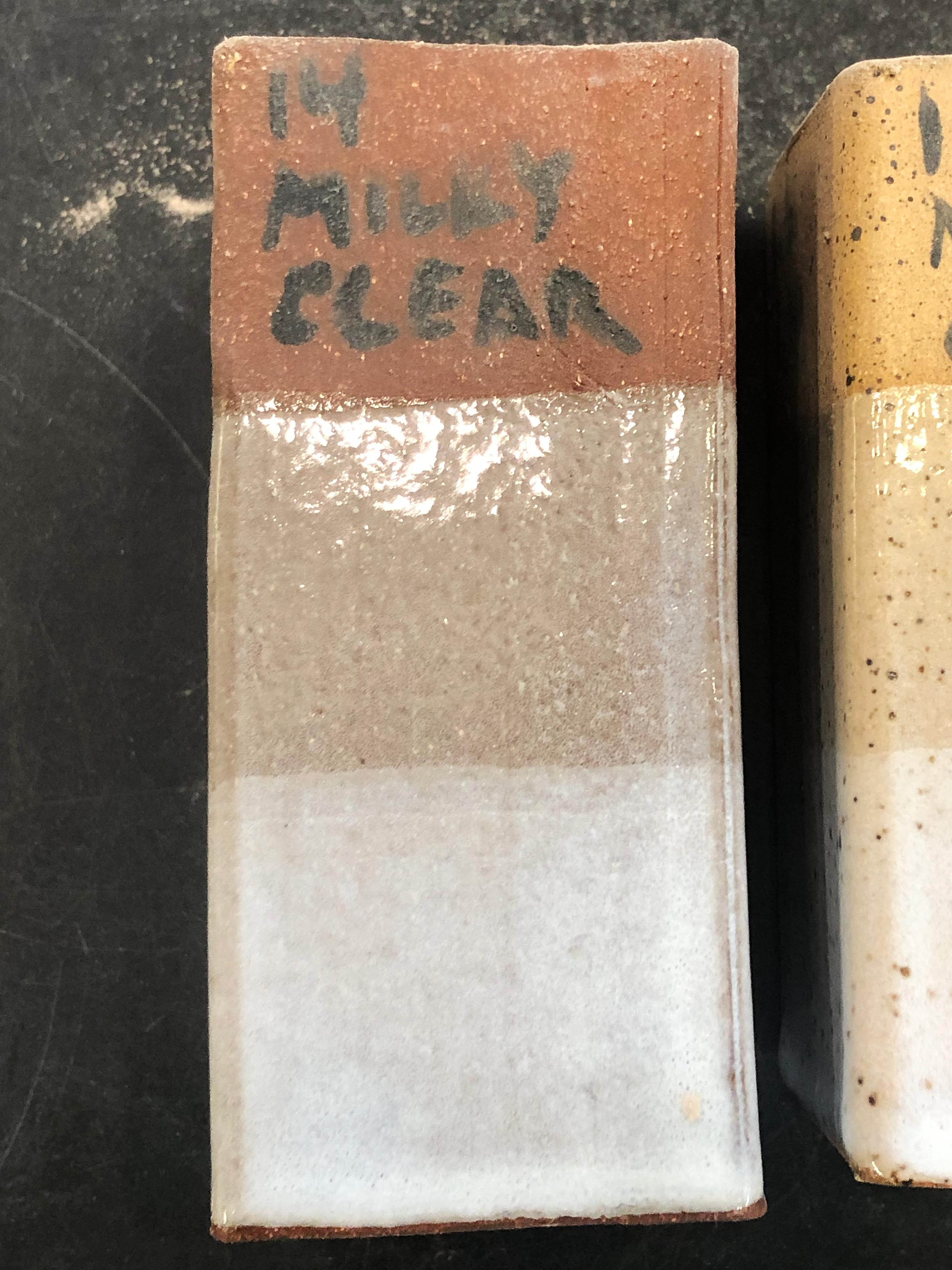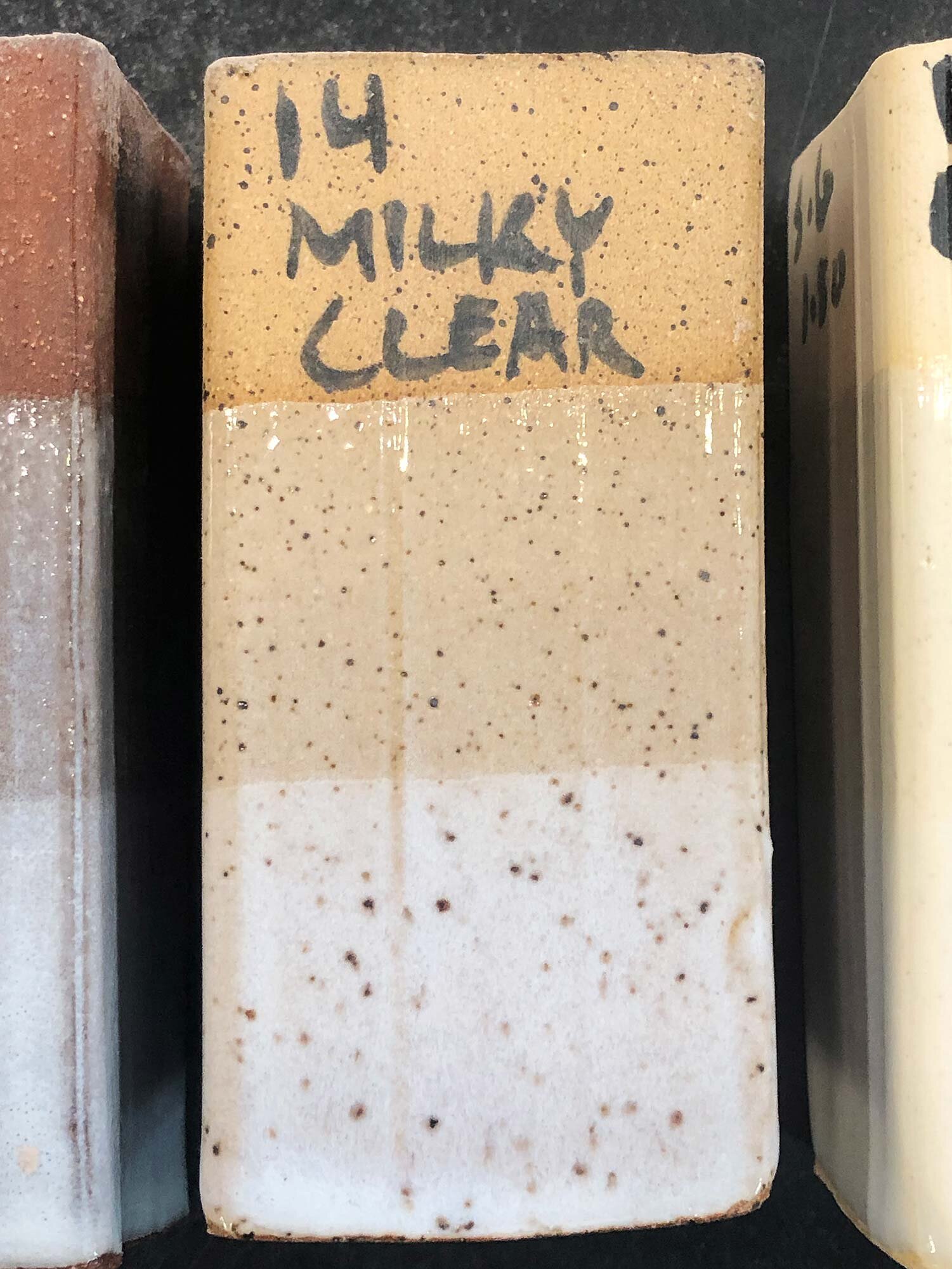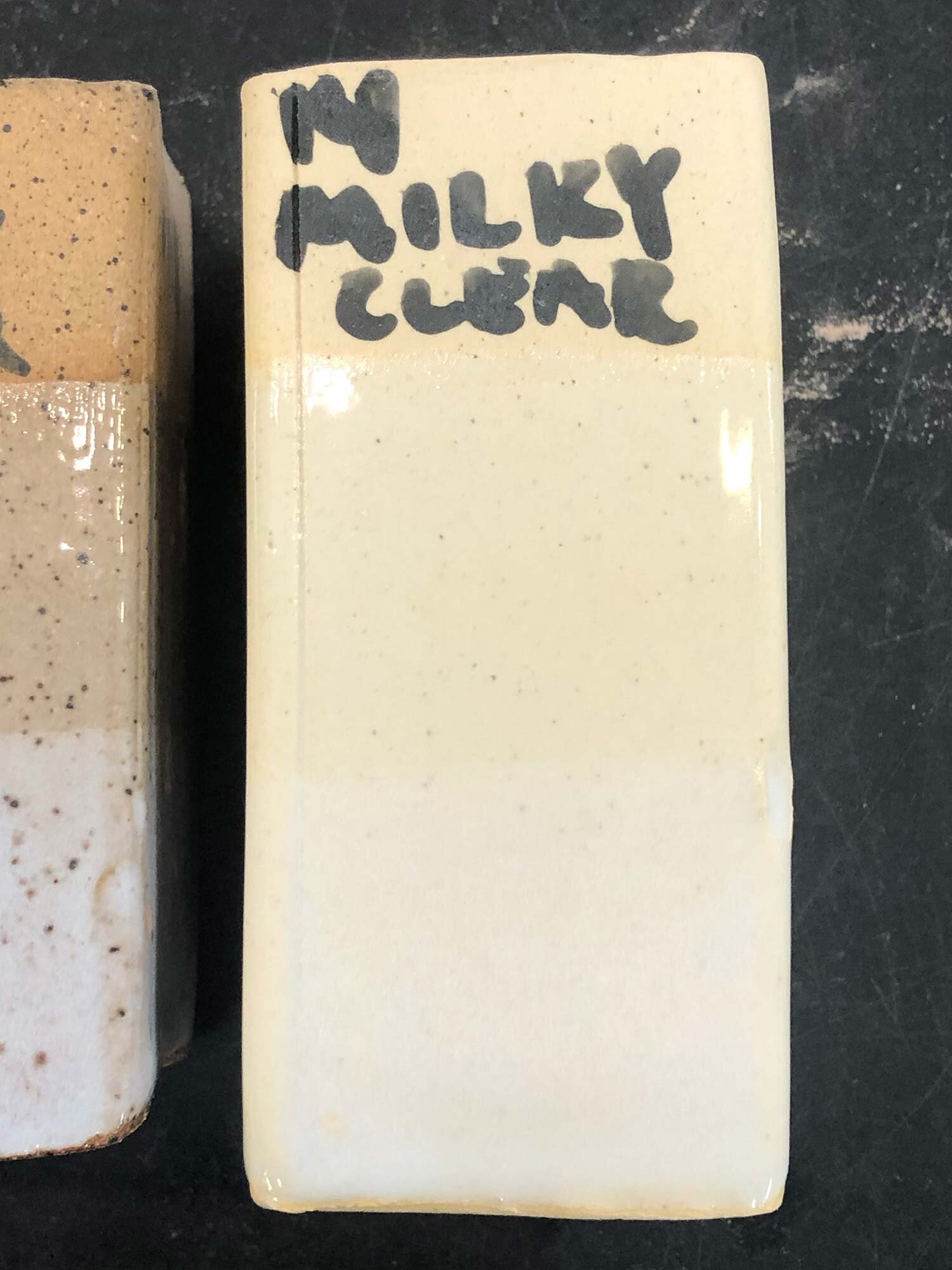Cone 6 Milky Clear is a robust, easy-to-use glaze that’s almost clear when applied thinly and when it’s on thicker, will result in a semi-opaque milky white / clear glaze. It does interesting things over underglazes and slips, and makes a great alternative to our favorite Glossy Clear recipe. The only challenge with this glaze is that when mixed correctly, around a specific gravity* of about 1.45 to 1.50, it feels very thin and doesn’t have much body. But don’t despair! Even a thin coat turns into a glossy surface that is food safe and plays well with other glazes, oxide washes and slips.
This glaze is one of the more popular glazes in the studio I manage, but I haven’t been able to find the the source of the original recipe. It does work well as a base glaze, for example adding 3% copper carbonate results in a nice turquoise glaze.
The glaze tests here were oxidation fired to Cone 6 in an electric front-loading kiln, with a 10 minute soak and very slow cooling due to the 6-inch+ thickness of the kiln walls. Try this glaze out, and let me know what you think in the comments. In the future, I hope to test this glaze with other oxides.
* To measure specific gravity for a glaze, use a heavy liquid hydrometer that can measure between 1.00 and 2.00, such as this hydrometer from Amazon.
Cone 6 Milky Clear Glaze
| Ingredient | Percentage | 3000g batch |
|---|---|---|
| Soda Feldspar | 33.8 | 1014g |
| Silica | 24.6 | 738g |
| Frit 3134 | 24.6 | 738g |
| Whiting | 5.4 | 162g |
| Gerstley Borate | 4.9 | 147g |
| Ball Clay | 3.5 | 105g |
| Zircopax | 3.2 | 96g |
| 100 | 3000g |
The Cone 6 Milky Clear glaze is a great addition to any studio. To properly mix it, in addition to the materials listed above, you will want to have a good drill, ventilator or dust mask, scale, a sieve, and other tools.
#Glazes That Work
This recipe is part of our series of posts of glazes that just work. There’s a million glaze recipes out there, but we’re posting a series of our tried-and-true favorites. Click here to see the other recipes we’ve posted.
For more info:
Read our guide on mixing glazes from scratch.
See our reviews of the best scales, cordless drills, or corded drills for mixing glazes.
Check out our recommended glazing accessories.
If you’d like to learn more about mid-range glazes, the best place to start is The Complete Guide to Mid-Range Glazes by John Britt. The book provides a comprehensive overview of materials, techniques and glaze recipes.
Buy at amazon.
Buy at bookshop.org.
































